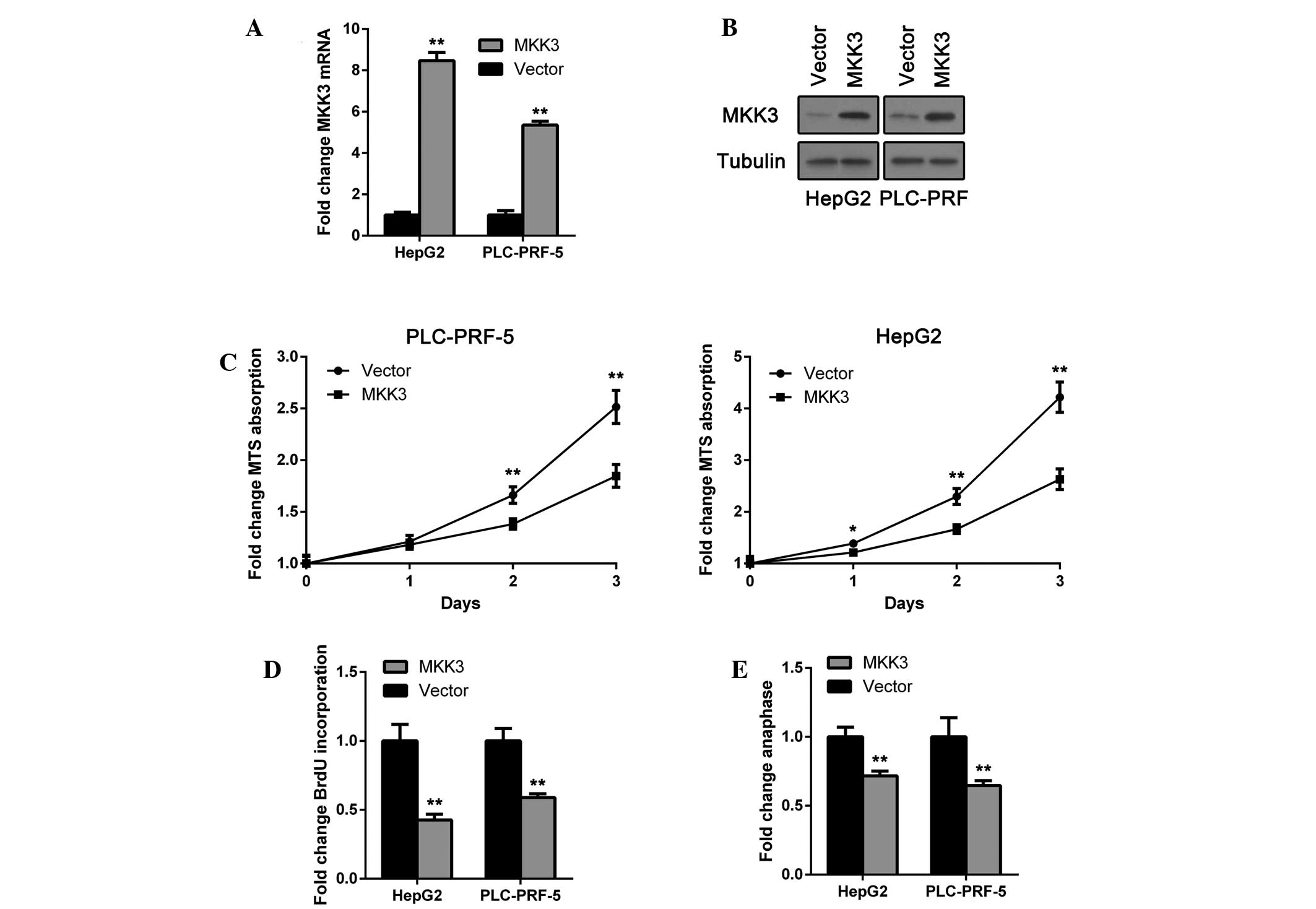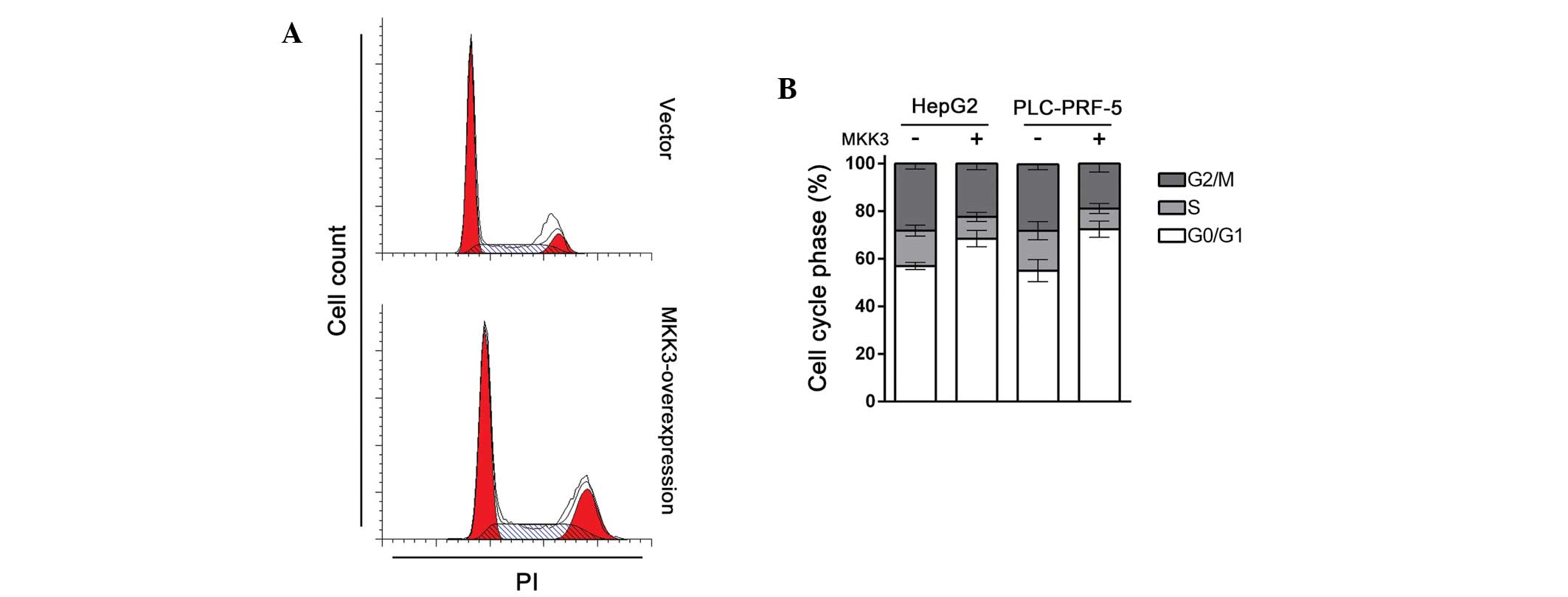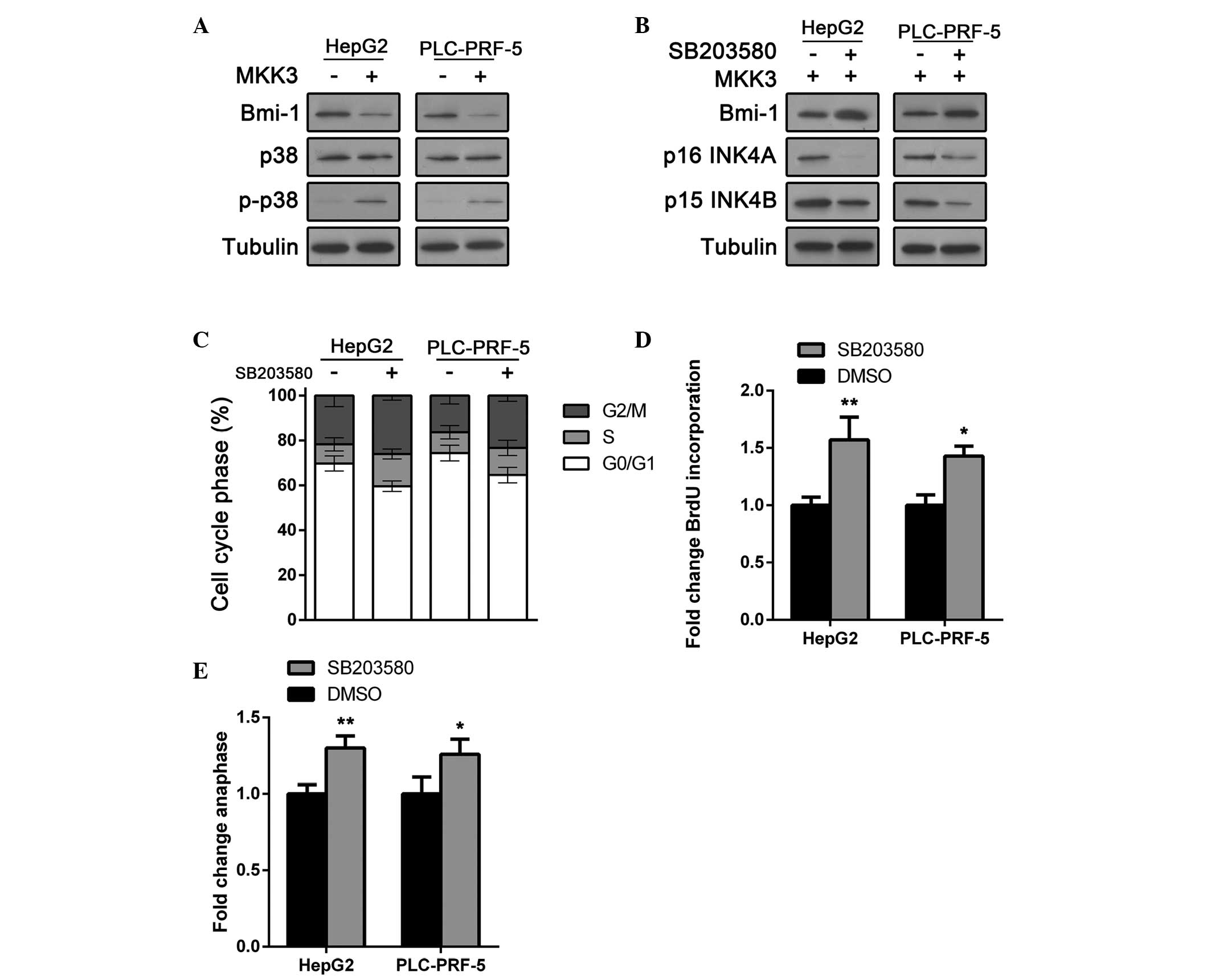|
1
|
Forner A, Llovet JM and Bruix J:
Hepatocellular carcinoma. Lancet. 379:1245–1255. 2012. View Article : Google Scholar : PubMed/NCBI
|
|
2
|
Siegel R, Ma J, Zou Z and Jemal A: Cancer
statistics, 2014. CA Cancer J Clin. 64:9–29. 2014. View Article : Google Scholar : PubMed/NCBI
|
|
3
|
Yeoman AD, Al-Chalabi T, Karani JB,
Quaglia A, Devlin J, Mieli-Vergani G, Bomford A, O'Grady JG,
Harrison PM and Heneghan MA: Evaluation of risk factors in the
development of hepatocellular carcinoma in autoimmune hepatitis:
Implications for follow-up and screening. Hepatology. 48:863–870.
2008. View Article : Google Scholar : PubMed/NCBI
|
|
4
|
Mohamed AE, Kew MC and Groeneveld HT:
Alcohol consumption as a risk factor for hepatocellular carcinoma
in urban southern African blacks. Int J Cancer. 51:537–541. 1992.
View Article : Google Scholar : PubMed/NCBI
|
|
5
|
Tsukuma H, Hiyama T, Tanaka S, Nakao M,
Yabuuchi T, Kitamura T, Nakanishi K, Fujimoto I, Inoue A, Yamazaki
H, et al: Risk factors for hepatocellular carcinoma among patients
with chronic liver disease. N Engl J Med. 328:1797–1801. 1993.
View Article : Google Scholar : PubMed/NCBI
|
|
6
|
Badvie S: Hepatocellular carcinoma.
Postgrad Med J. 76:4–11. 2000. View Article : Google Scholar : PubMed/NCBI
|
|
7
|
Alazawi W, Cunningham M, Dearden J and
Foster GR: Systematic review: Outcome of compensated cirrhosis due
to chronic hepatitis C infection. Aliment Pharmacol Ther.
32:344–355. 2010. View Article : Google Scholar : PubMed/NCBI
|
|
8
|
Llovet JM, Burroughs A and Bruix J:
Hepatocellular carcinoma. Lancet. 362:1907–1917. 2003. View Article : Google Scholar : PubMed/NCBI
|
|
9
|
Farazi PA and DePinho RA: Hepatocellular
carcinoma pathogenesis: From genes to environment. Nat Rev Cancer.
6:674–687. 2006. View
Article : Google Scholar : PubMed/NCBI
|
|
10
|
Roux PP and Blenis J: ERK and p38
MAPK-activated protein kinases: A family of protein kinases with
diverse biological functions. Microbiol Mol Biol Rev. 68:320–344.
2004. View Article : Google Scholar : PubMed/NCBI
|
|
11
|
Ono K and Han J: The p38 signal
transduction pathway: Activation and function. Cell Signal.
12:1–13. 2000. View Article : Google Scholar : PubMed/NCBI
|
|
12
|
Zarubin T and Han J: Activation and
signaling of the p38 MAP kinase pathway. Cell Res. 15:11–18. 2005.
View Article : Google Scholar : PubMed/NCBI
|
|
13
|
Wagner EF and Nebreda AR: Signal
integration by JNK and p38 MAPK pathways in cancer development. Nat
Rev Cancer. 9:537–549. 2009. View
Article : Google Scholar : PubMed/NCBI
|
|
14
|
Cerezo-Guisado MI, del Reino P, Remy G,
Kuma Y, Arthur JS, Gallego-Ortega D and Cuenda A: Evidence of
p38gamma and p38δ involvement in cell transformation processes.
Carcinogenesis. 32:1093–1099. 2011. View Article : Google Scholar : PubMed/NCBI
|
|
15
|
Kyriakis JM and Avruch J: Mammalian
mitogen-activated protein kinase signal transduction pathways
activated by stress and inflammation. Physiol Rev. 81:807–869.
2001.PubMed/NCBI
|
|
16
|
MacNeil AJ, Jiao SC, McEachern LA, Yang
YJ, Dennis A, Yu H, Xu Z, Marshall JS and Lin TJ: MAPK kinase 3 is
a tumor suppressor with reduced copy number in breast cancer.
Cancer Res. 74:162–172. 2014. View Article : Google Scholar
|
|
17
|
Malumbres M and Barbacid M: Cell cycle,
CDKs and cancer: A changing paradigm. Nat Rev Cancer. 9:153–166.
2009. View
Article : Google Scholar : PubMed/NCBI
|
|
18
|
Tian Y, Wan H and Tan G: Cell
cycle-related kinase in carcinogenesis. Oncol Lett. 4:601–606.
2012.PubMed/NCBI
|
|
19
|
Abraham RT: Cell cycle checkpoint
signaling through the ATM and ATR kinases. Genes Dev. 15:2177–2196.
2001. View Article : Google Scholar : PubMed/NCBI
|
|
20
|
Murray AW: Recycling the cell cycle:
Cyclins revisited. Cell. 116:221–234. 2004. View Article : Google Scholar : PubMed/NCBI
|
|
21
|
Jacobs JJ, Kieboom K, Marino S, DePinho RA
and van Lohuizen M: The oncogene and Polycomb-group gene bmi-1
regulates cell proliferation and senescence through the ink4a
locus. Nature. 397:164–168. 1999. View
Article : Google Scholar : PubMed/NCBI
|
|
22
|
Jacobs JJ, Scheijen B, Voncken JW, Kieboom
K, Berns A and van Lohuizen M: Bmi-1 collaborates with c-Myc in
tumorigenesis by inhibiting c-Myc-induced apoptosis via INK4a/ARF.
Genes Dev. 13:2678–2690. 1999. View Article : Google Scholar : PubMed/NCBI
|
|
23
|
Cao R, Tsukada Y and Zhang Y: Role of
Bmi-1 and Ring1A in H2A ubiquitylation and Hox gene silencing. Mol
Cell. 20:845–854. 2005. View Article : Google Scholar : PubMed/NCBI
|
|
24
|
Molofsky AV, He S, Bydon M, Morrison SJ
and Pardal R: Bmi-1 promotes neural stem cell self-renewal and
neural development but not mouse growth and survival by repressing
the p16Ink4a and p19Arf senescence pathways. Genes Dev.
19:1432–1437. 2005. View Article : Google Scholar : PubMed/NCBI
|
|
25
|
Yao XB, Wang XX, Liu H, Zhang SQ and Zhu
HL: Silencing Bmi-1 expression by RNA interference suppresses the
growth of laryngeal carcinoma cells. Int J Mol Med. 31:1262–1272.
2013.PubMed/NCBI
|
|
26
|
Wu SQ, Xu ZZ, Niu WY, Huang HB and Zhan R:
ShRNA-mediated Bmi-1 silencing sensitizes multiple myeloma cells to
bortezomib. Int J Mol Med. 34:616–623. 2014.PubMed/NCBI
|
|
27
|
Hanahan D and Weinberg RA: The hallmarks
of cancer. Cell. 100:57–70. 2000. View Article : Google Scholar : PubMed/NCBI
|
|
28
|
Hanahan D and Weinberg RA: Hallmarks of
Cancer: The next generation. Cell. 144:646–674. 2011. View Article : Google Scholar : PubMed/NCBI
|
|
29
|
Rosenthal DT, Iyer H, Escudero S, Bao L,
Wu Z, Ventura AC, Kleer CG, Arruda EM, Garikipati K and Merajver
SD: p38 gamma promotes breast cancer cell motility and metastasis
through regulation of RhoC GTPase, cytoskeletal architecture and a
novel leading edge behavior. Cancer Res. 71:6338–6349. 2011.
View Article : Google Scholar : PubMed/NCBI
|
|
30
|
He J, Liu Z, Zheng Y, Qian J, Li H, Lu Y,
Xu J, Hong B, Zhang M, Lin P, et al: p38 MAPK in myeloma cells
regulates osteoclast and osteoblast activity and induces bone
destruction. Cancer Res. 72:6393–6402. 2012. View Article : Google Scholar : PubMed/NCBI
|
|
31
|
Liu K, Yu D, Cho YY, Bode AM, Ma W, Yao K,
Li S, Li J, Bowden GT and Dong Z and Dong Z: Sunlight UV-induced
skin cancer relies upon activation of the p38 alpha signaling
pathway. Cancer Res. 73:2181–2188. 2013. View Article : Google Scholar : PubMed/NCBI
|
|
32
|
Sakurai T, Kudo M, Umemura A, He G,
Elsharkawy AM, Seki E and Karin M: p38 alpha inhibits liver
fibrogenesis and consequent hepatocarcinogenesis by curtailing
accumulation of reactive oxygen species. Cancer Res. 73:215–224.
2013. View Article : Google Scholar :
|
|
33
|
Zhou Y, Liang Y, Wei J, Chen J and Tang Q:
Lentiviral-mediated p38 MAPK RNAi attenuates aldosterone-induced
myocyte apoptosis. Mol Med Rep. 8:493–498. 2013.PubMed/NCBI
|
|
34
|
Sun BK, Kim JH, Nguyen HN, Oh S, Kim SY,
Choi S, Choi HJ, Lee YJ and Song JJ: MEKK1/MEKK4 are responsible
for TRAIL-induced JNK/p38 phosphorylation. Oncol Rep. 25:537–544.
2011.
|
|
35
|
Paillas S, Boissière F, Bibeau F, Denouel
A, Mollevi C, Causse A, Denis V, Vezzio-Vié N, Marzi L, Cortijo C,
et al: Targeting the p38 MAPK pathway inhibits irinotecan
resistance in colon adenocarcinoma. Cancer Res. 71:1041–1049. 2011.
View Article : Google Scholar
|














